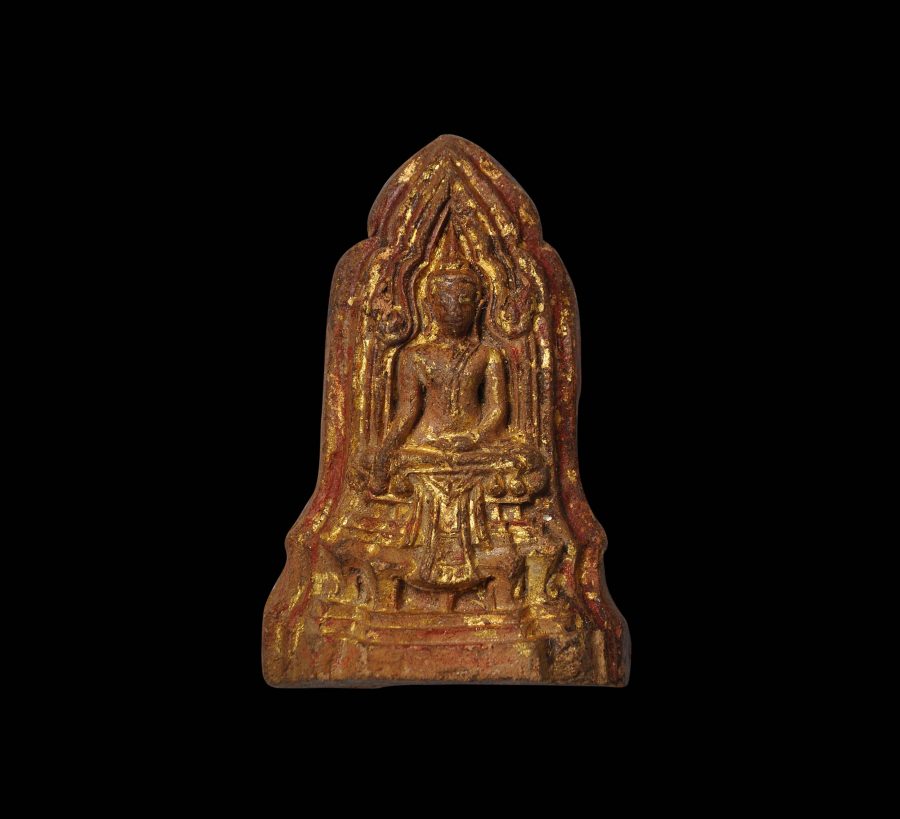This small but precise votive tablet or plaque is of fired clay with traces of red paint or lacquer and gilding with gold leaf. It dates to the late Ayutthaya or early Bangkok period (18th or early 19th century), and possibly earlier. It was made by pressing clay into a metal reverse-mould after which it was fired. It shows the Buddha seated in bhumispharamudra on a high, tiered throne and beneath an ornate trefoil arch which tends to frame the Buddha.
Such tablets were acquired by Buddhist devotees and left in sacred cave retreats and at shrines as acts of merit, or they were acquired at religious sites as a momento. Within Buddhist Southeast Asia, the practice was most prevalent in Thailand and Burma. The tablets often were made in one location and the carried by pilgrims to be left at a site in another location. This tablet was acquired in the UK (where Burmese antiques tend to be more prevalent than Thai antiques; the British colonised Burma but not Thailand) and it is possible that this Thai-made tablet was carried by a pilgrim to a religious site in Burma.
Similar examples of similar size, in the State Hermitage Museum in Russia, with the tiered or multiple arched frame and with gilt and red lacquer are illustrated in Siamese Art (1997, p. 180). The Russian examples are attributed to the 18th or 19th centuries.
The tablet is in excellent condition.
References
Green, A., & T.R. Blurton (eds.), Burma: Art and Archaeology, The British Museum Press, 2002.
Green, A., (ed.), Eclectic Collecting: Art from Burma in the Denison Museum, NUS Press, 2008.
Krairiksh, P., The Roots of Thai Art, River Books, 2012.
Lowry, J., Burmese Art, Victoria and Albert Museum, 1974.
Siamese Art of the 14th-19th Centuries in the Hermitage, Slavia Art Books, 1997.






